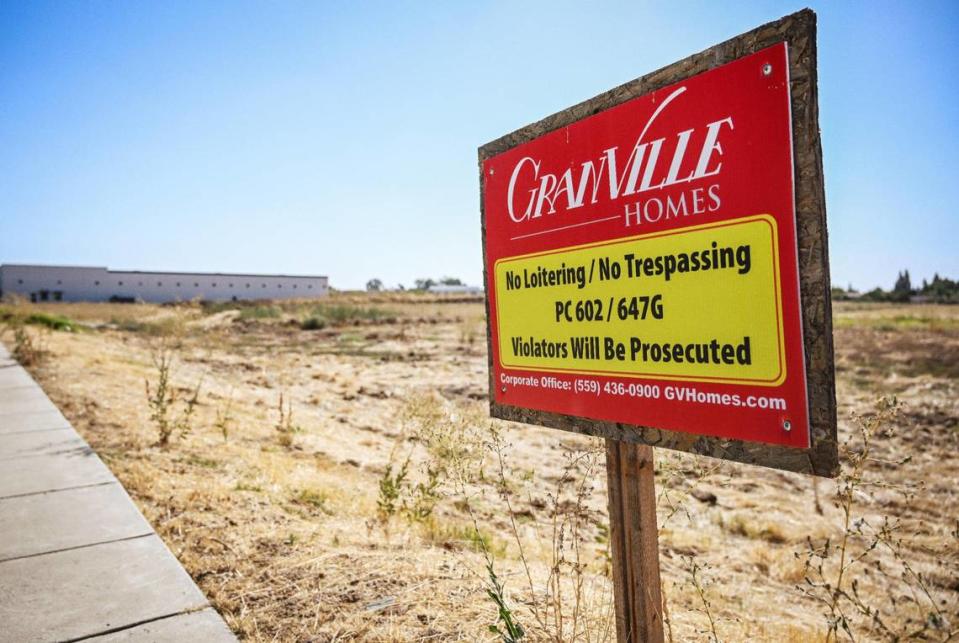Developer’s housing plan in Clovis gets favorable treatment, special zoning, city emails show
Clovis city officials gave special consideration to a prominent local developer to pursue building homes on property that was once touted as a job-creating business park and to the dismay of neighbors who believe the city has not lived up to past promises.
The development, proposed by the Assemi Group and the Assemi family’s Granville Homes, has been pitched as student and faculty housing to support the nearby California Health Sciences University — the for-profit medical school owned by the Assemis.
The proposal would include up to 250 single-family homes, 64 townhomes and up to 400 apartment units. It would cover 70 acres — in two sites — on Alluvial Avenue near Temperance Avenue in east Clovis.
A review of hundreds of records, mostly internal emails, obtained by The Bee show the lengths to which city officials went to accommodate the developer and take action that could allow Granville Homes to avoid paying a significant amount of money collected to support city services.
The Bee’s review even found instances of city planners consulting with the developer on whether it should disclose publicly the family’s name or the family-owned business behind the project. Notices to the public characterized the development as driven by the medical school — and purposely did not name the Assemis or Granville Homes, emails show.
The development requires changes to the city’s general plan, and various steps have already been taken administratively without public hearings. And when the city did hold informational meetings with neighbors, those who attended told The Bee they felt their input was irrelevant and were told as much by city officials.
The development proposal falls within the city’s roughly 335-acre Research and Technology Park. The park includes property that is specifically zoned for research and technology uses, but also has pockets of residential zoning to accommodate homes that pre-date the creation of the park. It also includes some mixed-use commercial zoning.
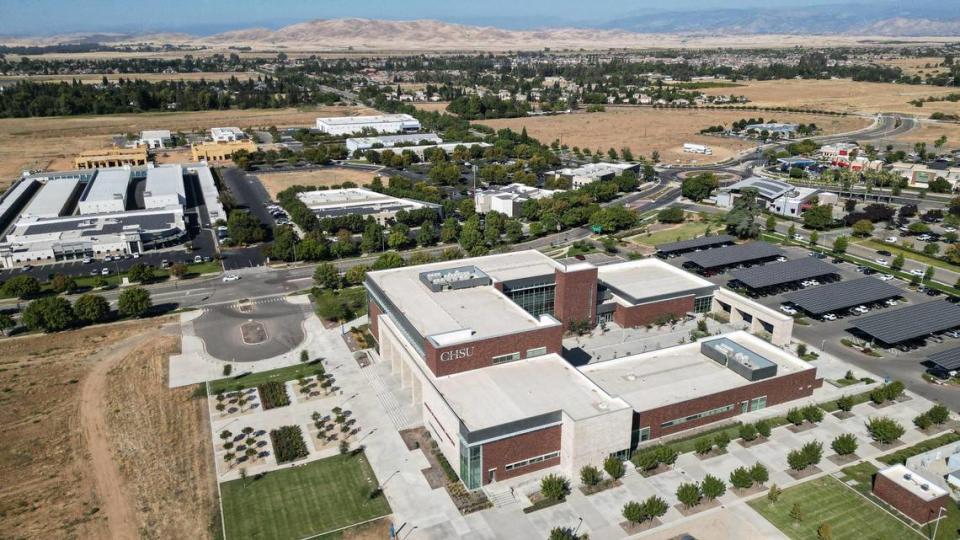
Perhaps counter-intuitively, even though the Assemis’ proposal is for more housing, the zoning changes initiated by the city to accommodate that proposal do not rezone any of the property within the park to residential. Rather, they actually expand the area within the park that’s zoned for research and technology by rezoning current residential and mixed commercial use property.
The process benefits the developer in a number of ways. Property rezoned residential would invite development proposals from any number of competing home builders. But the proposal links the housing to the university, which is on property zoned for research and technology. As such, the city has determined the Assemis’ proposal is not a traditional residential housing project but the extension of a permissible use within the research park.
This matters because the school, owned by the developer, has say over who builds that housing. It also matters because the zoning could significantly benefit the developer financially in at least three ways.
For one, since the change was initiated by the city, the Assemis avoided paying thousands of dollars on application fees. Second, the research park already has infrastructure in place — paid for by a federal grant. Third, it is presumed the development fees that will be charged to build student and faculty housing in a zoned Research and Technology Park will be less than those in a traditional residential subdivision.
It’s not clear how big of a benefit it will be. When The Bee asked the city of Clovis, the city acknowledged it has not established a fee rate for housing in a research park.
Those fees are intended to cover the costs of city service associated with growth, not only including infrastructure such as water, sewer, streets, lights, curbs and sidewalks, but also police and fire protection.
Further, The Bee reviewed campaign finance documents and noted various councilmembers who voted for the changes that allow the development received thousands of dollars in campaign donations from the developer — a scenario so troubling that state lawmakers have since restricted the practice.
Ethics and municipal planning professionals expressed concern about the process.
“City planners that are involved with this, and other public officials, really need to have enough ethical awareness about themselves to understand that the public may look at this and say, ‘This doesn’t seem right,’” said John Pelissero, a senior scholar at the Markkula Center for Applied Ethics at Santa Clara University. “If people perceive that something doesn’t look right here, it has the potential to erode trust in Clovis city government.”
City officials defended the overall process, which they say is ongoing. As for specific interactions between the city’s planning department and the developer, current city planners would not comment, noting that the actions were taken by someone who no longer works for the city.
The city’s position is that the housing is appropriate for the Research and Technology Park because it supports the university. But that’s also questionable. The housing is intended for students and faculty, but the city has provided the developer with a loophole that could pave the way for untold numbers of those homes to be owned by residents with no connection to the university — a medical school that is still awaiting accreditation.
Tech park failed to lure tenants
The city’s Research and Technology Park — an effort conceived in the late 1990s to early 2000s — was presented as an alternative to an apartment complex proposal that was resisted by nearby homeowners.
The business park was championed for its potential to lure top-notch technology companies. and thousands of high-paying jobs.
In order to do so, the city successfully applied for nearly $3 million in federal funding to help develop the infrastructure needed to attract those companies.
But the city failed to attract the tech companies or the jobs, so the land stayed largely unoccupied.
After being on the drawing board for decades, Mike Prandini, president and CEO of the Building Industry Association of Fresno and Madera counties, said it’s better for the city to develop residential housing than to continue to have a vacant site.
“They have decided that’s the best use of that property, given that they cannot entice any industrial users to that site, “ he said, “that it’s better to let that site develop than to leave it vacant for another 30 years.”
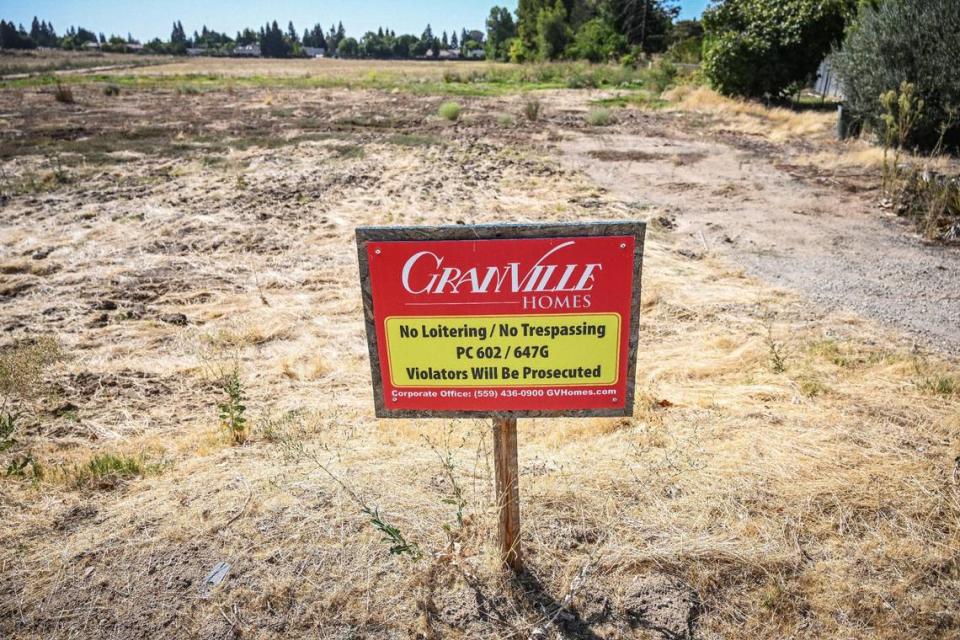
Former Clovis Mayor Jose Flores, who was a councilmember at the time the council created the Research and Technology Park, agreed it’s time to move on.
“We made decisions back then hoping for the best,” Flores said. “Those did not come to fruition, but … it’s a good-looking park, still. We had a vision, but we didn’t get the cooperation of California, and so now, when you’re given lemons, you make lemonade.”
That lemonade — at least from the council’s perspective — was the proposal in 2016 from Proctor Campus Holdings, LLC, a company owned by the Assemi family.
The company submitted an application for an administrative use permit to build CHSU and student housing on 24 acres. The property was within the business park.
The campus was built in 2020. That same year, Granville Homes and the Assemi Group went to the Clovis City Council seeking approval to expand the campus housing to 70 acres, nearly tripling the size of the original proposal.
In early 2021, the Clovis City Council directed staff to initiate the process to make amendments to the city’s general plan and take other administrative action to help accommodate the expansion.
Soon after, in early February, the Clovis City Council voted to approve a memorandum of understanding with California Health Sciences University, LLC, and Proctor Campus Holdings, LLC, to lay out the buildout for the for-profit school campus and its housing.
During that February council meeting, now-current Mayor Lynne Ashbeck reminded her colleagues that in the past, another proposal was rejected by the council because it would include a housing component, and it didn’t fit with the business park’s vision.
Bob Whalen, a councilmember at the time, expressed concern over the type of housing being proposed. He wanted the student and faculty housing to be “legit,” and not an excuse for major residential development.
“If that happens, and (the housing) it’s not related to CHSU in any way,” he said, “I’m going to be sorely disappointed.”
Under an initial plan, the developer only intended to make five homes permanently available to the CHSU community.
Housing loophole
To assuage concerns, the proposal did include a requirement that all housing had to first be offered to students and faculty. Buyers would also have to give priority to CHSU, if they decided to later sell their home.
However, there was a catch. Any home that stays on the market for 30 days without a student or faculty buyer, can be sold to anyone.
For context, according to realtor.com, on average, homes in Clovis currently sell “after 30 days on the market.”
Former city official Mike Dozier, who led the development of the Research and Technology Park for Clovis, said it’s a lot of housing that’s being proposed.
“It appears to be the creation of a university campus, which is encouraging,” he told The Bee in November 2022. “However, there’s a lot of housing. I can’t imagine that much is needed just for students and faculty.”
The current enrollment at CHSU, according to its website, is 518 students.
Presumably, any housing built beyond what is actually needed for students and faculty would thus become traditional residential development, with all the benefits of being developed in a business and research zone.
Those benefits might be considerable.
Renee Mathis, director of planning and development services for the city of Clovis, acknowledged that development fees in the research park, which has infrastructure in place, would be lower than those for housing built outside the park.
Development fees for office space within the business park are $21.21 per square-foot and $8.19 per square-foot for industrial space. However, the city says the rate for the housing in the research park hasn’t been established yet.
For residential development outside the business park, sewer fees alone, for example, are $9,584 per single family home, and $7,763 per unit for multi-family housing, according to the city’s proposed 2023 revisions to the development fee schedule.
On top of that, the process the city initiated for the developer can be costly. For example, an application fee for a general plan amendment is $13,560, plus $55 per acre, and the application fee for zoning can range from $13,586, plus $55 per acre, to $18,635, plus $55 per acre, according to the city’s 2023 fees.
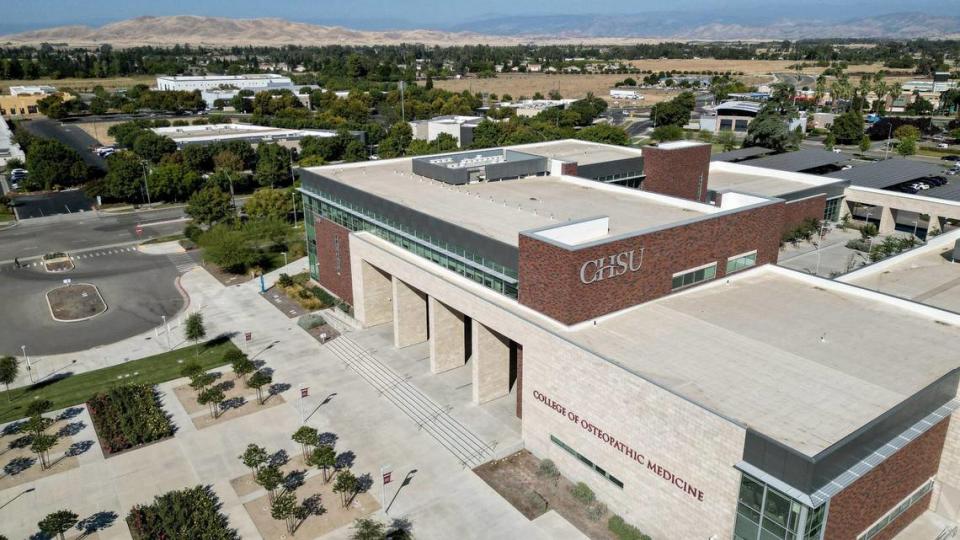
At the February council meeting, Mathis made clear the university would have a say in who would develop the campus housing without noting the medical school was owned by a prominent local homebuilder.
“CHSU, because they’re not typically in the business of building homes, or you know, actually building the campus, they may select a builder or builders to develop out any portions of the campus and the campus housing,” Mathis said during a presentation of the housing project, according to the meeting’s video recording.
Mathis, who kept referring to the Assemis only as the “operating group” for CHSU during that meeting, further said the MOU would require that all applicants for relevant land use entitlements have “a CHSU stamp of approval from one of their high ranking officials.”
“They will be involved in part of the … ,” she said before briefly pausing and changing her thought, “I don’t want to say approval process, but approving who’s developing according to the master plan and phasing.”
During the interview with The Bee, Mathis was asked if she wasn’t aware that the owners of CHSU were developers who would benefit from the housing development or why she said they weren’t typically in the business of building homes.
“I’m going off of CHSU and the fact that it’s a school — a medical school, and typically medical schools are not in the business of developing.”
Campaign contributions
The council ultimately voted unanimously to approve the developer’s expansion proposal.
The motion was made by Ashbeck and seconded by Vong Mouanoutoua, both of whom had previously received campaign contributions from members of the Assemi family and the school itself.
Ashbeck received $15,000 total in campaign donations from CHSU, the Assemi Group, Granville Homes, Jeff Roberts, who is the vice president for Granville Homes, and Christine Lingenfelter, the chief real estate officer at the Assemi Group, for her 2021 reelection campaign.
Now-current Mayor Pro Tem Mouanoutoua received $10,000 in contributions from the Assemis for his 2021 reelection campaign.
Both councilmembers have previously told The Bee their decisions were in no way influenced by the donations. That said, such votes are now forbidden under California law.
Senate Bill 1439, which went into effect Jan. 1, requires councilmembers who receive more than $250 from a donor to make a choice when voting on matters that benefit that contributor. The member can either recuse themself — in other words, not vote — or return the campaign donation.
Sean McMorris, transparency, ethics & accountability program manager at California Common Cause, found the Clovis campaign contributions concerning. He said that’s why his organization, and others, fought hard to pass the new legislation.
“For too long, politicians and special interests have demanded that we ignore common sense and accept that large campaign contributions from special interests with applications before elected leaders don’t affect how electeds vote on those contributors’ applications,” he told The Bee in May. “Pay-to-play, real or perceived, diminishes public trust in government and corrodes democracy.”
A couple of months after the vote, word spread about the expansion. Nearby residents began asking questions.
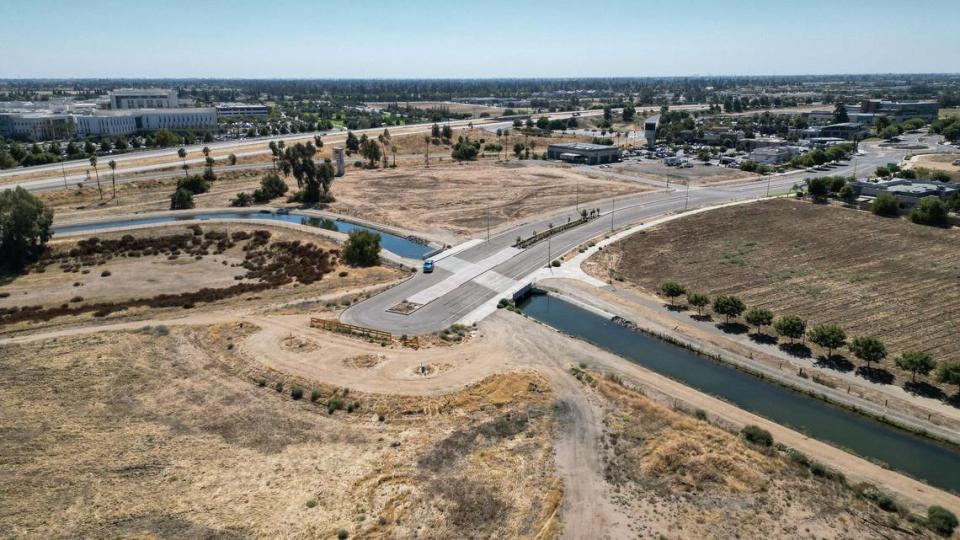
Ricky Caperton, who was a senior city planner at the time, responded to an email from a resident asking for the opportunity to review proposed changes. The resident wanted to make a written or verbal response at an April 27, 2021, meeting city officials held at CHSU. The city hosted that meeting with property owners who would be affected by the zoning changes. Those homeowners lived in houses in an area zoned residential but that would become part of the expanded Research and Technology Park zone.
In essence, Caperton told the resident the discussion would be about what staff had been ordered to do by the city council as it relates to the general plan amendments and rezone changes in the Research and Technology Park. Officials, however, would not be discussing any residents’ concerns or who was behind the project.
“I do want to be clear that the intent of tomorrow evening’s (meeting) is not to debate the merits or vision of the R-T Park, but rather to inform property owners of what City Council has directed us to do as it relates to clearing up any zoning inconsistencies in the area,” he wrote in an email on April 26, 2021. “While there have been questions about what developers may be doing out there in the future, tomorrow’s discussion is not meant to speculate or address that at any great level of detail.”
Cozy relationships
If Caperton’s interactions with residents seemed dismissive, his exchanges with the developer were more than helpful and reveal just how cozy the relationship had become.
Take for example Caperton’s Aug. 23, 2021 email exchange with Lingenfelter.
In one email, Caperton asks Lingenfelter if she was fine with him referring to her and Darius Assemi as “representatives of the CHSU campus master plan.”
“Or would you like me to reference you as part of the Assemi group? Should I make references to Granville Homes?” he asks her in the email exchange.
Lingenfelter responded: “I like the idea of having CHSU rep. Let me pow wow w our team and get back to you ASAP.”
Three days later, Caperton then shared the draft notice with Assemi and other employees at Granville Homes and the Assemi Group, including Lingenfelter. The notice would go out to nearby residents to inform them of the first of three neighborhood meetings that began in January 2022, and were separate from the April meeting earlier that year.
“Attached is the draft language. As a reminder, I am generally referring to you as the CHSU campus master plan representatives,” Caperton wrote in an email on Aug. 26, 2021. “I didn’t want to call out specifically Assemi or Granville in the notices.”
The Bee made multiple attempts via phone calls and email to reach members of the Assemi family for this story, but did not receive a response.
‘Potential conflict’
Residents say it’s clear that the city did not want them to know a developer known for building large residential projects was behind the CHSU campus expansion. Some say they never even received the notices for the meetings, but became aware through their neighbors.
“If they’re being deceitful, I’m not in favor of it,” said Adelaide Miller, whose property would be rezoned into Research and Technology Park. “If they did that, I mean, they’re leaving it out on purpose because they just don’t want you to have the whole information.”
Caperton continued to interact with the Assemis in ways that planning experts told The Bee raised questions about transparency and in whose interest the city was serving.
In a Jan. 21 email from Caperton to Darius Assemi, Caperton asks him for “projections for the next 3 to 5 years.”
“I don’t intend to put that in the PPT (PowerPoint) for tonight, but I suspect that people will make the argument that we don’t need “that much” housing for the school.”
Assemi responds by saying “Approximately 400 units of student housing built in likely 3 phases over several years.”
It’s a curious exchange given that the city already had reached the memorandum of understanding with the university that called for 286 multi-family units.
In another email, five days later, Caperton seemed to warn the developer of growing concern among the project’s neighbors.
“FYI, See below. It’s a flyer being posted around the R-T Park area,” Caperton wrote in the email to Darius Assemi, where he attached a photo of the flyer.
He also tipped off a city councilmember — Mouanoutoua — about negative letters from residents about the project.
“Attached are two of the more contentious letters from the R-T park efforts,” he wrote in an email to the councilmember on March 21, 2022.
Caperton has since taken a job in the city of Napa as planning manager. He repeatedly declined to comment for this story.
Carol Barrett, a nationally acclaimed planning expert, said the American Institute of Certified Planners, of which Caperton publicly identifies himself as being a part of, has a “code of ethics that specifically says that you should not conceal the true applicant.”
“The goal of a public meeting is to allow the public to have complete information about a project,” Barrett said, “and at the very least, these back-and-forth emails imply that there is information that the planner is saying ‘I don’t want the public to have,’ and that is in and of itself, troubling.”
Pelissero, the senior scholar at the Markkula Center for Applied Ethics, said “this appears to be a potential conflict of interest for the city official — any city official — to be doing things that are beyond the norm for the way they should handle other development projects.”
Also troubling, Barrett and others said, was the inconsistency over the official name of the applicant.
The name of the applicant, Barrett explained, is derived from the application submitted to the city. In this case, the applicant’s name has been changed various times — from Proctor Campus Holdings to Granville Homes and the Assemi Group to California Health Sciences University and Proctor Campus Holdings. The Assemis have created yet another company, University Campus Housing, Inc., to develop the faculty housing.
Mathis, the current planning director for the City of Clovis, defended the process. In an interview with The Bee, she said the city has been transparent and even held several neighborhood meetings.
When asked if she believed the city was transparent when Caperton chose not to mention Granville Homes and the Assemi Group in at least some of the notices for those meetings, she said: “I can’t speak on behalf of Ricky or what the intent behind that email was trying to get after.”

Signing away the right to protest
Residents want to know what it is exactly that the Assemis are planning to do.
At the informational meetings, one of which a resident said was driven by Assemi himself and not city staff, it became clear to many that what was being pitched as student and faculty housing could easily morph into a full-scale housing development.
Other residents were concerned about the implications of suddenly having their homes placed in a Research and Technology Park. Their homes were obviously not student or faculty housing. Could they be forced to move? Could they resell them?
The city has been addressing that issue by reaching out to those property owners and offering them to sign a rezone agreement. If signed, the agreement is a promise from the city to allow them to remain in their homes.
But the city wants something in return. The agreements require homeowners to not protest the rezone or any development within the Research and Technology Park.
Experts say the individual agreements are not unheard of, but at least one expert said the situation in Clovis seems to be unlike others. For example, when commercial space starts to trickle into what was traditionally a residential area, they say, cities will sometimes do a mixed-use zoning or create legal non-conforming uses.
Connie Stopher, executive director for the Economic Development Coalition in Temecula, said the case in Clovis appears to be unique and puzzling.
It doesn’t make sense for Clovis to rezone private residential properties into Research and Technology Park, she said, especially when there’s a housing shortage, and the city wasn’t able to fully bring its business park to fruition.
“I would be a little concerned if I was a homeowner in that situation,” Stopher said. “It sounds like the city is saying, ‘Oh, you can live there as long as you don’t protest’ is kind of maybe putting them in a hard spot.”
Barrett, the planning expert providing her perspective as an individual, said she’s never happy when it appears the government is saying it doesn’t think people should stand up in public and express their opinion.
“I think people have the right to do that,” she said. “But would it be something that would make a project easier to vote for if there were fewer people objecting? Yeah, so I can understand why the language got in there.”
The city, she said, is not providing any special benefit to the homeowners because they already have the right to continue to live in their homes.
‘I guess politicians never keep a promise’
Although the council’s vote on the agreement with the school paves the way for development to move forward, that still hasn’t happened.
City planning director Mathis said the work on the general plan changes and rezone are still ongoing, and following input from neighborhood meetings, the Assemis may make changes that are incorporated into their formal development proposal. That proposal — which would be part of an amendment to the 2016 administrative use permit — would be approved administratively.
Residents, Mathis said, will be able to weigh in at future public hearings on the changes to the general plan and the rezone.
Still, neighbors remain skeptical, in part, because they feel the business and technology park was a promise to prevent more residential development in their neighborhood and instead bring jobs.
“I guess politicians never keep a promise,” said Miller, whose property would be affected by the rezone. “Don’t make promises you can’t keep or don’t even intend to.”
But it’s not just the project’s neighbors who are paying a price from the city’s decision to allow the housing development.
Taxpayers might also end up bearing a cost — twice.
Remember that $3 million federal grant paid for with tax dollars? The federal government, at one point, did track the development in the business park to ensure it was doing what was intended, but over time it has ceased any monitoring and there does not appear to be any effort by the federal government to ask for the grant to be repaid.
The grant was intended to provide infrastructure that brought jobs — not more homes and more people.
And more people means more children. And that’s where the second taxpayer cost could be incurred.
Schools might be stressed
Kelly Avants, a spokeswoman for the Clovis Unified School District, told The Bee that such a massive housing development could create issues.
The area’s only elementary school is already crowded, and developer fees are not nearly enough to build new schools. So, if the development required a new school, the district would likely have to go to the public for a bond paid for by a tax increase.
“What we’ve seen around the nation, and around the state, is that when schools are left solely relying on developer fees to maintain and build schools,” she said, “they fall behind and that’s when you get schools that are either in disrepair or not being able to be built for a number of years.”
As of Sept. 22, she said, the elementary school in the area — Dry Creek Elementary School, one of the largest in the district — was pretty full with 942 students.
The district’s typical elementary size, Avants said, is 600 to 800 students depending on how the school was built.
“Where things would get difficult for us, for our school district, is around the financing for new schools,” she said. “We have been very fortunate in the past for our community to support bond measures, which allow us to build the facilities.”
The district also will potentially have to redraw student attendance when the housing development is completed.
“I think it’s very, very early in the stages,” she said, “but a full buildout ... would likely result in modifying attendance boundaries to serve that particular area.”
What if medical school fails?
But if Clovis Unified has concerns, another entity — that receives a large amount of public funding — fully supports the idea of housing in the area.
Fresno County’s largest healthcare provider, Community Health System (CHS) submitted an official letter of support for the housing project to the city of Clovis.
To neighbors and many others that came as no surprise.
At the time that letter was sent, the chairman for the hospital system’s board was none other than Farid Assemi, Darius Assemi’s brother.
CHS is the umbrella organization that owns Clovis Community Medical Center, Community Regional Medical Center in downtown Fresno, the Fresno Heart and Surgical Hospital, and the Community Behavioral Health Center.
“As Clovis Community (Hospital) expands, so will the need for more healthcare staff on this hospital campus,” Craig A. Wagoner, chief operating officer for CHS, wrote in a letter of support, dated April 11, 2022. “While we understand that CHSU students and faculty will be offered priority status for obtaining housing, we greatly appreciate the potential for more nearby housing opportunities for our staff — especially since housing is at a premium in the greater Fresno - Clovis area.”
The hospital also plays a role in helping the Assemis’ for-profit school succeed. One of the requirements for accreditation is for students to perform clinical rotations. The hospital provides those rotations.
And accreditation is also on the minds of neighbors.
The Assemis’ for-profit pharmacy school failed to achieve accreditation and is scheduled to close in 2024. CHSU’s college of osteopathic medicine is currently operating under a pre-accreditation status. It opened in fall 2020.
What would happen if the medical school suffered a similar fate? Who would then live in all those homes?
In a letter submitted to the city by a resident identified as Tim Douglas, he refers to a Fresno Bee story about CHSU’s pharmacy college and poses a series of questions to city staffers.
Among those is why the issue of accreditation was never brought up in any of the neighborhood meetings.
“Do you agree that this lack of accreditation will have a significant impact on the multi-family housing project and how it’s being ‘sold’ by the developer and how it will be viewed by the city?” he asks. “And if not, why not?”
But then other residents say that while it might matter to them who lives there, it probably doesn’t matter to the developer — just as long as it’s allowed to build homes and sell them.
“They just want to make a profit,” Kelli Sorensen, another nearby resident, told The Bee about the Assemis, “that’s all they want to do.”
And Sorensen believes the Assemis have found a willing partner in that endeavor: city officials.
“The government is supposed to work for us,” she said. “I think they forget that we pay their salary.”
